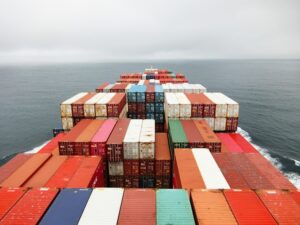Methanol, also known as wood alcohol, has the potential to be a new, greener fuel for shipping, but it is not yet clear methanol’s higher cost and carbon emissions can be brought low enough to make it a worthwhile alternative.
Ships are already being built to run on methanol.
Proman, the world’s second-largest producer of methanol, has formed a joint venture with the shipping company Stena Bulk to benefit from synergies between their companies in building up a fleet of modern, sustainable medium-range chemical tankers run on methanol, per Marine Impact.
Wuhan Innovation Jianghai Transportation, a Chinese ship owner, has placed an order for 16 methanol-fueled coastal freighters with Jiangsu Qinfeng Shipbuilding according to Safety4Sea.
While these are only coastal ships, the EU is trying to incentivize the industry to focus on long-range shipping.
Under the EU’s Fit for 55 regulatory package, vessel operators are encouraged to transition to sustainable fuels, including methanol, through significant penalties levied on continued fossil fuel use. For fuel producers, the regulations offer a stable, long-term framework from 2024 to 2050, paving the way for secure investment opportunities in the maritime sector, according to Splash247.com.
Challenges to overcome
Methanol—which is currently used as an industrial feedstock for plastics, plywood, synthetic fabrics, fibers, pharmaceuticals, and agrichemicals—has its fair share of drawbacks as a shipping fuel, according to a report in Forbes.
Methanol only has 45% as much energy per ton as standard marine diesel, so ships sailing long distances would need much larger tanks, says the report. The low energy content also means that, even though it produces less sulfur, methanol’s actual lifetime greenhouse gas emissions can be three times greater than marine deisel, the report adds. Current methanol averages 1.6 times as expensive for the same energy as the ten-year average for standard fuel, and bunkering, or fueling ships, increases the cost, according to Forbes.
Methanol can be produced by greener methods, but they are more costly, according to the U.S. Department of Energy (DOE).
Methanol “is generally produced by steam-reforming natural gas to create a synthesis gas. Feeding this synthesis gas into a reactor with a catalyst produces methanol and water vapor. Various feedstocks can produce methanol, but natural gas is currently the most economical,” according to the DOE.
While solutions to make lower-cost, cleaner methanol from biomass feedstocks are being developed, it’s still too early to tell if they will be more affordable at scale, according to Forbes.
With time and resources, methanol very well could be the future of shipping. For now, however, it is not ready to replace current shipping fuels.














